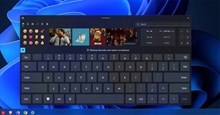TABLE OF CONTENTS
DOCUMENTATION PAGE WITH ABSTRACT
ACKNOWLEDGEMENT
TABLE OF CONTENTS
LIST OF FIGURES
LIST OF TABLES
PART I. INTRODUCTION
1.1. Research reasonable
1.2. Research objectives
1.3. Research question and hypotheses
1.4. Limitations
1.5. Definitions
PART II. LITERATURE REVIEW
2.1. Nanotechnologies and Nanomaterial
2.1.1. Nanotechnologies
2.1.2. Nanomaterial
2.1.3. Nano composite
2.2. Photocatalyst
2.3. Band gap
2.4. Titanium dioxide (TiO2) as a photocatalysis
2.4.1. TiO2 versus other materials as a photocalyst
2.4.2. Overview of titanium dioxide
2.4.3. Chemical structure of TiO2
2.4.4. Application of titanium dioxide in environmental protection
2.4.4.1. Practical application of TiO2 as a photocatalysis
2.4.4.2. Waste water treatment
2.4.4.3. Degradation of pesticide
2.4.5. The use of titanium dioxide in degradation of Azo dyes
2.4.6. Disadvantage of titanium dioxide
2.4.6.1. Recombination of excited electron
2.4.6.2. Low efficiency for utilizing solar light
2.4.7. Doping techniques
2.4.7.1. Nitrogen doping
2.4.7.2. Noble metal and transition metal deposition
2.4.8. Nickel ferrite doping technique
PART III. METHOOLOGY
3.1. Preparation of nickel doped titanium dioxide
3.1.1. Method to synthesize nickel ferrite
3.1.1.1. Synthesis method
3.1.1.2. Chemicals and materials
3.1.2. Method to synthesize nickel ferrite doped titanium dioxide
3.2. Characterization of synthesized photocatalyst
3.3. Treatment for testing catalyst ability of nickel ferrite doped titanium dioxide for methyl orange degradation
PART IV. RESULTS
4.1. Characterizations
4.1.1. Structural and composition characteristic of prepared sample
4.1.2. UV-Vis reflection spectra
4.2. Photocatalyst properties
4.2.1. Mechanism of photocatalyst reaction
4.2.2. Degradation of methyl orange
4.3. Magnetic properties
PART V. DISCUSSION AND CONCLUSION
REFERENCES













